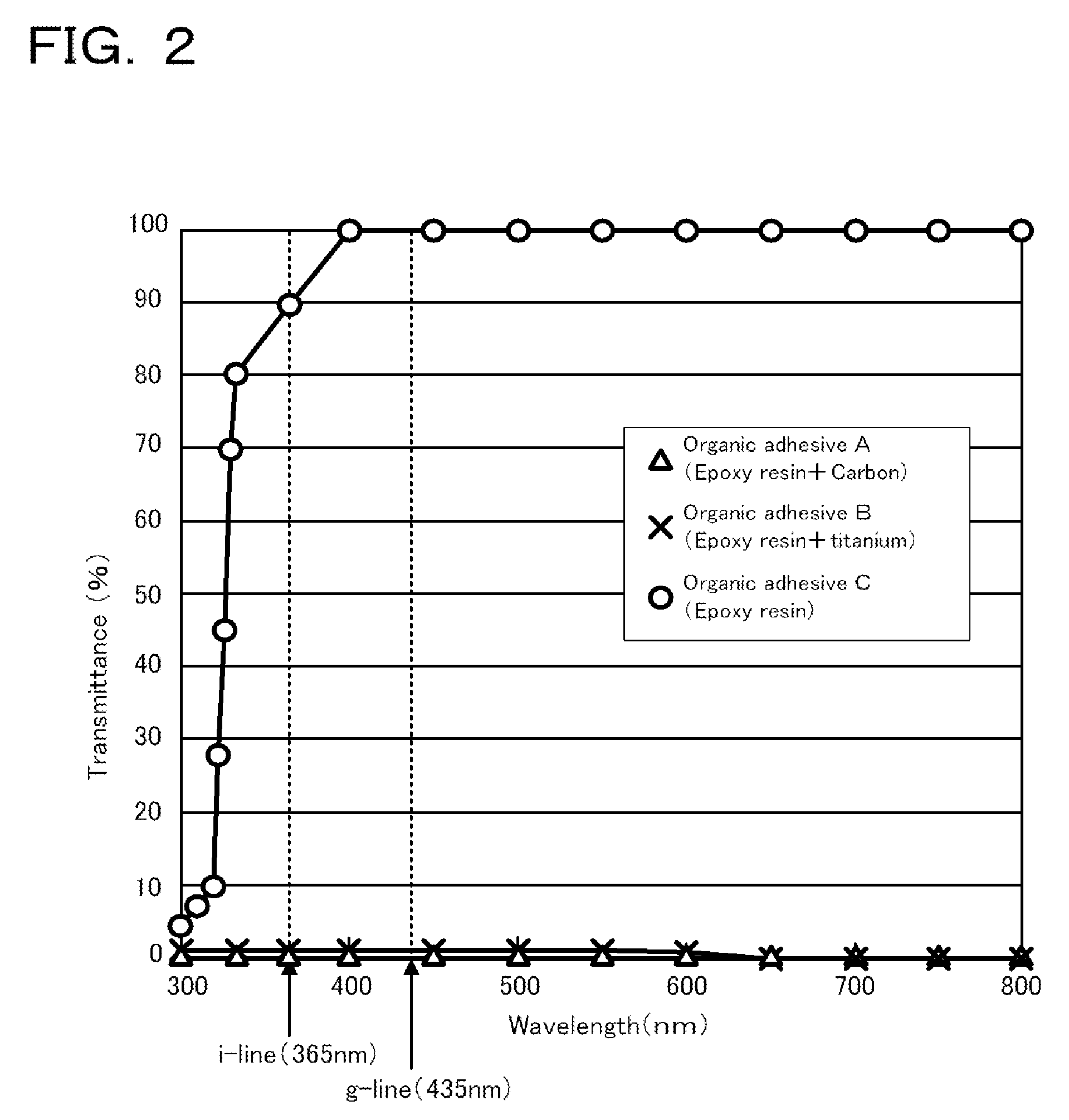Composite substrate and method for forming metal pattern
a technology of composite substrate and metal pattern, which is applied in the field of composite substrate and a method for forming metal pattern, can solve the problems of inability to form desired resist pattern, inability to form desired metal pattern, and inability to expose a large amount of photoresist to light, so as to achieve high degree of precision, higher thermal expansion coefficient, and high thermal expansion coefficient
- Summary
- Abstract
- Description
- Claims
- Application Information
AI Technical Summary
Benefits of technology
Problems solved by technology
Method used
Image
Examples
example 1
[0048]As Example 1, a composite substrate 10 illustrated in FIG. 1 was fabricated, and a metal pattern was formed by a lift-off process using photolithography.
[0049]More specifically, first, a lithium tantalate substrate (hereinafter referred to as an LT substrate) having a thickness of 250 μm and a diameter of 100 mm, which served as a piezoelectric substrate 11, and a borosilicate glass substrate having a thickness of 250 μm and a diameter of 100 mm, which served as a supporting substrate 12, were prepared. The LT substrate was a 42° Y-cut H-propagation LT substrate, in which H denotes the propagation direction of a surface acoustic wave (SAW), and the cut angle was a rotated Y-cut. Subsequently, the above-mentioned organic adhesive A was applied to a surface of the borosilicate glass substrate by spin coating. The back side of the LT substrate was bonded to the surface of the borosilicate glass substrate on which the organic adhesive A was applied. Heating at 160° C. produced a l...
example 2
[0051]A composite substrate 10 was fabricated, and a metal pattern was completed, as in Example 1 except that the material of the supporting substrate 12 was silicon instead of borosilicate glass. Measuring the widths of the metal pattern thus completed at 100 positions, the metal pattern had a width of 0.5±0.05 μm with a standard deviation σ of 0.02 μm.
PUM
| Property | Measurement | Unit |
|---|---|---|
| Wavelength | aaaaa | aaaaa |
| Transparency | aaaaa | aaaaa |
| Light | aaaaa | aaaaa |
Abstract
Description
Claims
Application Information
 Login to View More
Login to View More - R&D
- Intellectual Property
- Life Sciences
- Materials
- Tech Scout
- Unparalleled Data Quality
- Higher Quality Content
- 60% Fewer Hallucinations
Browse by: Latest US Patents, China's latest patents, Technical Efficacy Thesaurus, Application Domain, Technology Topic, Popular Technical Reports.
© 2025 PatSnap. All rights reserved.Legal|Privacy policy|Modern Slavery Act Transparency Statement|Sitemap|About US| Contact US: help@patsnap.com



